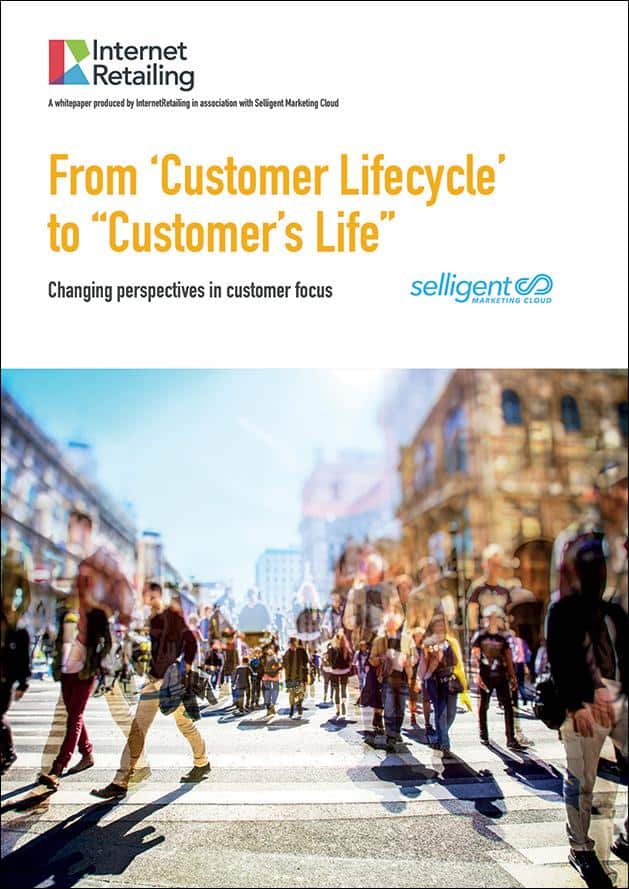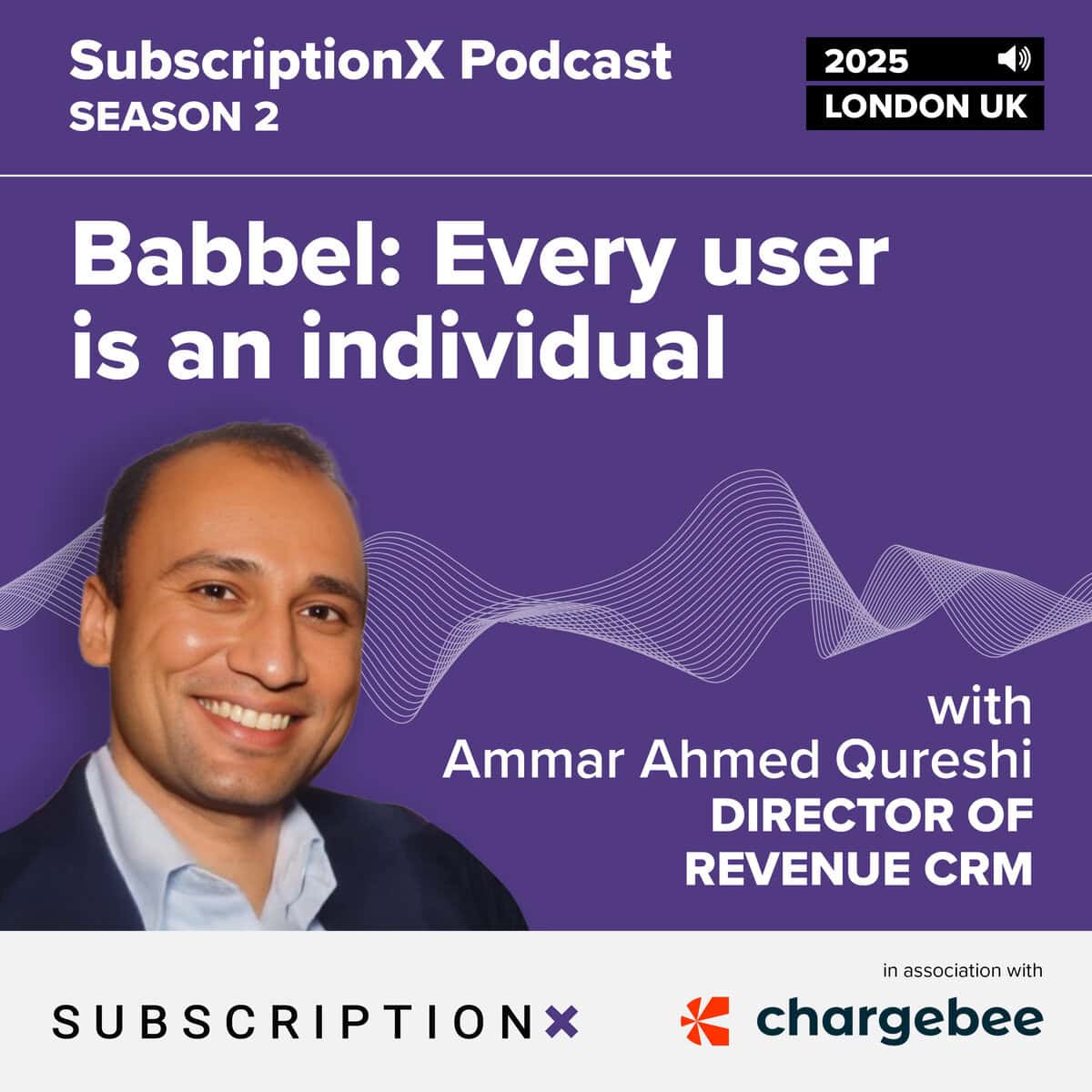Paul Skeldon, Mobile Editor, InternetRetailing, investigates how retailers need to live their life with consumers in order to really get to know them.
Breathe.
That is what my phone keeps telling me to do: a mindfulness app downloaded in haste one over-stressed evening and now I am regularly being told, often at stress-inducing and rather inopportune moments, to stop and just breathe.
While a bit annoying now the novelty has worn off, this level of contact between app and me shows how far into my life this company has reached. What if this could be extended to marketing of actual consumables?
In truth, it already has. The relationship between brands and retailers has shifted massively, driven by shoppers’ devotion to their smartphones and no longer ever being offline. The hyper-connected consumer is now looking for the brands they like and trust to be part of their lives, not just something that pushes things at them as and when a marketing campaign kicks off.
This move to ‘in-life’ marketing as opposed to ‘life cycle’ marketing is a fundamental one for retail marketers, but one that is littered with challenges.
According to research undertaken by InternetRetailing, in conjunction with Selligent Marketing Cloud for the white paper “From customer lifecycle to customer’s life: changing perspectives in customer focus,” 91% of retail marketers see being ‘in life’ as vital or important to their strategy. Just 9% of retailers quizzed saying it wasn’t. Yet, just 28% felt that they had the skills to deliver in-life marketing.
This is the challenge, how to balance delivering the kind of messaging that adds to consumer’s lives at the moment they want it, rather than just telling them to breathe when they are in the middle of filming a video interview with an important client.
“We are reaching a paradigm shift in customer engagement, where the consumer comes first,” says Christopher Baldwin, Head of Marketing, Northern Europe, Selligent Marketing Cloud. “Instead of the communication channel or product being the start point of how marketers conceptualise campaigns or initiatives, marketers must use the individual customer as a starting point, in real-time.”
Luckily, the shift to being always-on, smartphone-obsessed shoppers, means that most consumers may be more demanding in what they want, but they are also spewing out vast amounts of data as they go – data that the intelligent and AI-enabled marketer can leverage to start to understand the life of the consumer and know better when to reach out to them and with what.
Baldwin continues: “Today’s consumers are a tough act to follow, especially when it comes to assigning them definite stages in the customer lifecycle. The need to act on real-time, contextual data on preference and behaviour helps to create laser-focused messages that hit home.”
He adds: “So instead of applying cookie-cutter personas to segments with similar lifecycle status that are then spoon-fed the same standard messages, consumer-first marketing relies on state-of-the-art customer intelligence powered by rich data.”
GEN Z IN THE DRIVING SEAT
The need to fully understand consumers – and their lives – is only set to become more of a priority as all shoppers – led by Generation Z shoppers – increasingly rely on digital.
In fact, according to an international study from The Center for Generational Kinetics, commissioned by WP Engine, when it comes to buying things, Gen Z are driven by mobile apps and digital presence. Yet, despite their eagerness to access the web using new methods and different devices, says they report, they still show a clear preference for a company’s website over a mobile app when making purchases.
But this fact holds true across all generations, with Baby Boomers leading the pack at 93%, followed by Gen X (89%), Millennials (71%), and Gen Z (69%).
However, as they come of age Gen Z are likely to become the dominant force is what drives digital marketing. According to the study, Gen Z continues to be the most internet-dependent generation – 61% of Gen Z can’t comfortably go more than four hours without the internet, while 13% of Baby Boomers can go a week or more. Gen Z, which has never known a world without the Internet, not only expects 24/7 digital access, but expects that within five years everything – clocks, refrigerators, vacuums, dishwashers and other appliances – will be connected online.
Gen Z has grown up in the hyper-personalised world of targeted advertisements and social platforms. As a result, they are willing to trade privacy for these personalised, in-life experiences. The study finds that 38% will provide their personal data to enable a more personalised experience over an anonymous one.
Additionally, 40% of Gen Z would stop visiting a website if it didn’t anticipate what they needed, liked, or wanted. These shoppers are the ones that are going to drive a shift to in-life marketing.
“Gen Z is empowered, connected, practical, empathetic self-starters who want to stand out and make a difference in the world,” explains Jason Dorsey, President at The Center for Generational Kinetics. “They merge the human and digital experiences – it is all one combined reality for them. They are fuelled by technology engagement and value uniqueness, authenticity, creativity, share-ability and purpose. And they look for that from the world around them.”
“Gen Z is well on its way to becoming the largest generation of consumers by the year 2020,” adds Fabio Torlini, EMEA Managing Director at WP Engine. “For marketers and brands to effectively engage Gen Z, they must embrace new technologies, experiment with new forms of communication, and internalise the nuances in how Gen Z blends the analogue and digital worlds.”
SAVING THE HIGH STREET
Perhaps the most interesting upshot of this is that it may yet prove to be a boon for the High Street. While Gen Z is demanding this kind of in-life experience, they want to combine it with the real world.
Millennial and Gen Z shoppers are increasingly browsing and purchasing online while in-store, with 78% of younger generations shop both in-store and online simultaneously, and are 34% more likely than older customers to use a mobile device in a store, reveals retail research from Conversant.
According to Conversant’s Elliott Clayton, SVP of Media UK: “A few years ago, in-store Wi-Fi was seen as a basic marketing channel and time-waster for bored friends and partners waiting around. Today’s young, savvy customers will do price comparison on their mobiles, but they might also be ordering the right size or colour of an item from your store that isn’t available on the premises.”
The consumer journey is now non-linear and so marketing needs to adapt. Being part of the consumer’s life is going to be vital to tapping into this more convoluted and confusing purchase funnel.
“The fast-growing brick-and-mobile shopping trend benefits both the brand and the customer. Brands have multiple opportunities to market to consumers and capture a sale, while consumers themselves make more informed decisions when purchasing. It may seem like we’re bemoaning the closure of shops on the high-street but there’s good reason why former online-only retailers are opening physical stores – the key is syncing up offline and online,” says Clayton. “To seize the opportunity around brick-and-mobile engagements, brands need an online experience that enhances in-store device activity and a marketing strategy that also complements it.”
This means using the data they give you to fully understand not only what they look at and what they buy, but what they are doing in the wider world, why they like what they like and why they might be interested. Understanding their social media presence, as well as their wider habits is key to unlocking this in-life marketing concept.
Get that right and you can start to breathe easier.
Breathe.





